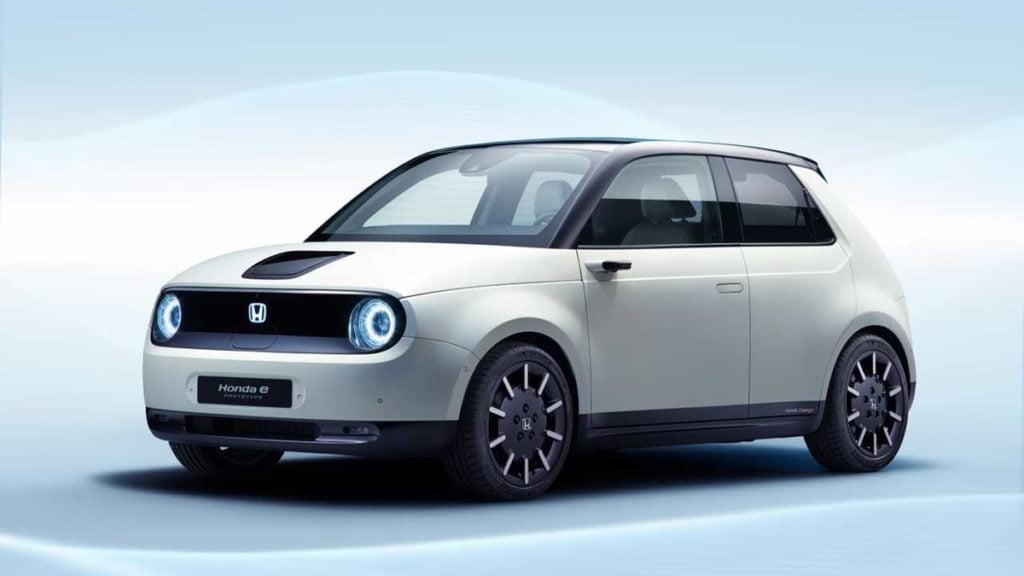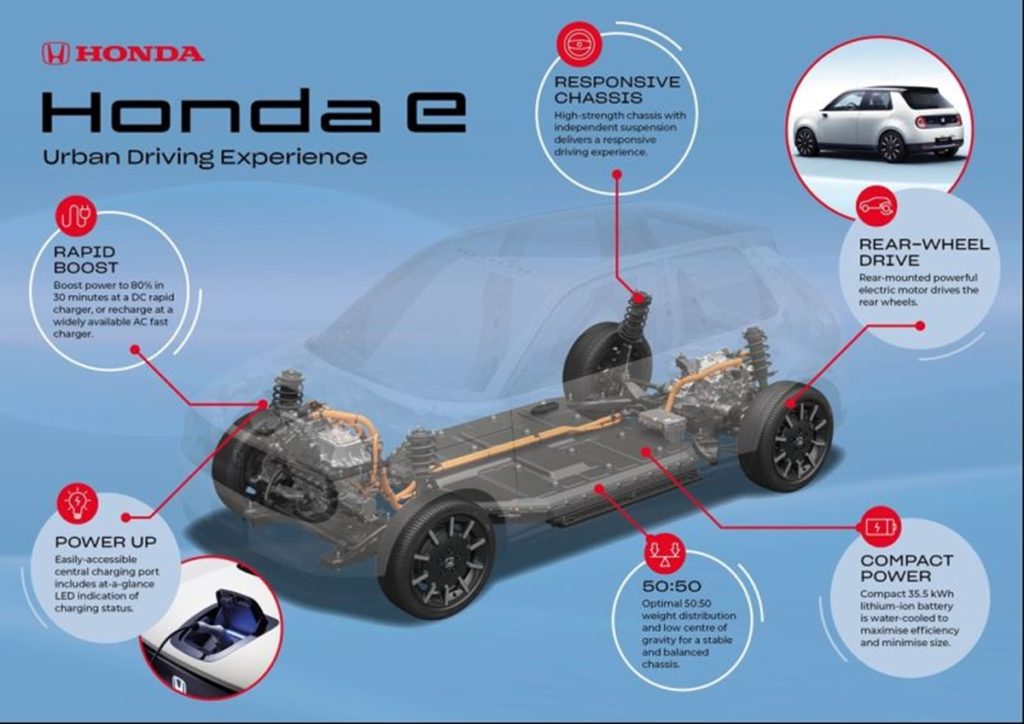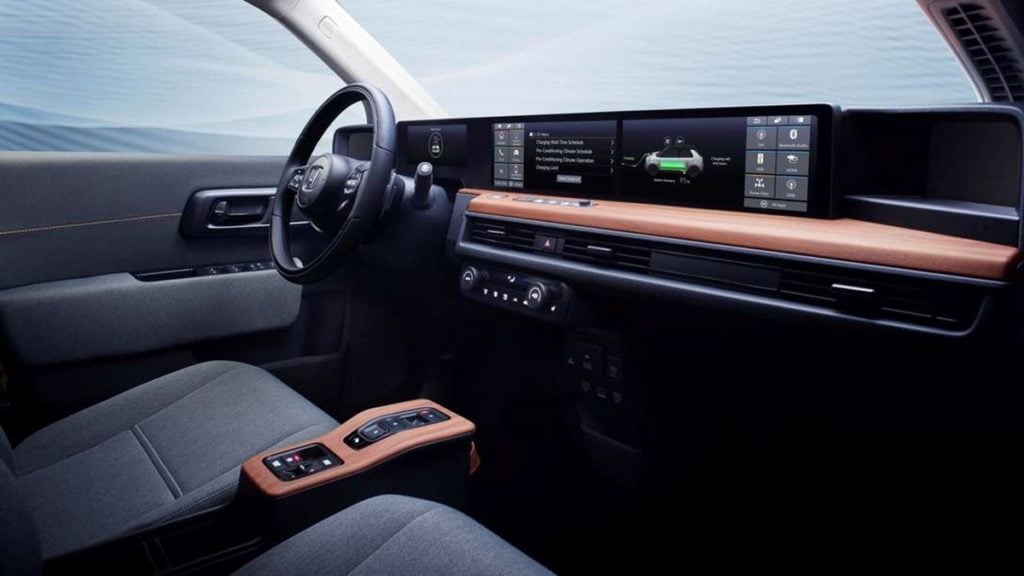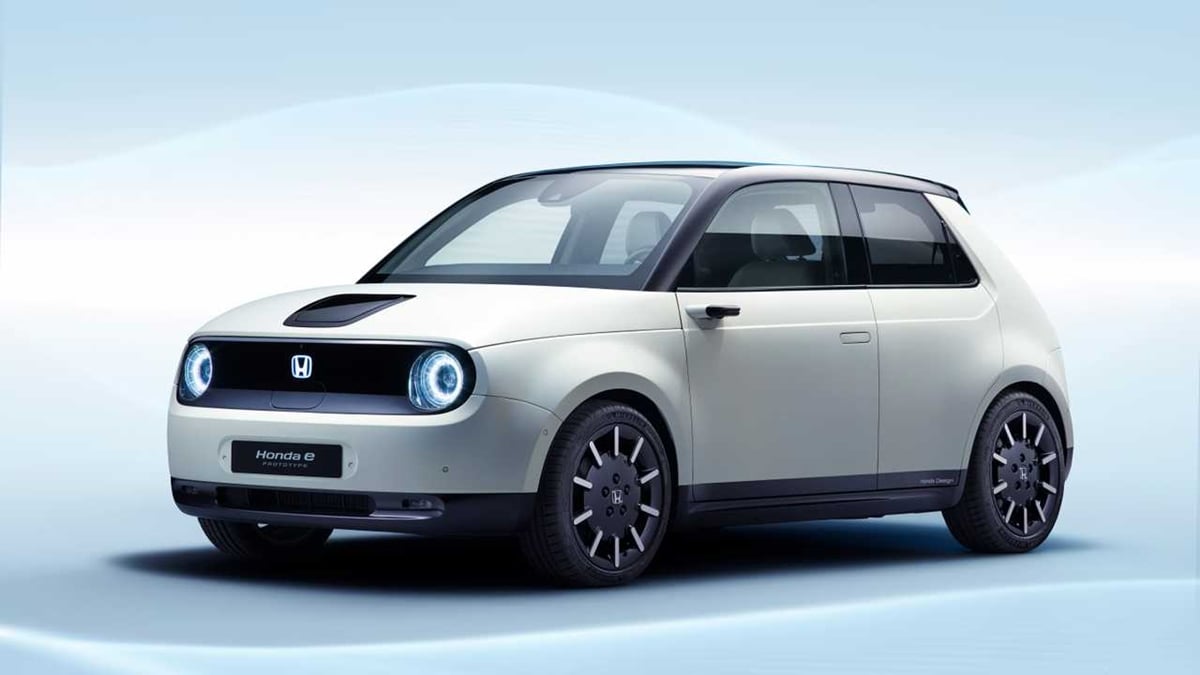The Honda e will be powered by a 35.5 kWh Lithium-ion high-capacity battery with 200 km driving range. A rear mounted electric motor will drive the rear wheels.
The Honda e, Honda’s latest compact electric vehicle, was seen in near production from at the 2019 Geneva Motor Show. Not much technical details of this EV was known, other than the name which Honda announced some time ago. Honda has now announced further technical details about the ‘e’, ahead of it launch later this year.

The Honda e is the first Honda to be based on a dedicated EV platform which has been developed focusing particularly for the urban environment. The battery has been placed low on the floor and centrally, within the wheelbase of the car. That gives the Honda e a perfect 50:50 weight distribution and a low center of gravity that should help it with good handling and stability.
Power from the rear mounted electric motor is sent to the rear wheels which also employs torque vectoring for improved handling. It gets four-wheel independent suspension, components of which have been made from forged aluminum to keep things light. The suspension has been tuned better stability in all conditions, a smooth ride and responsive handling. The light weight also helps wth better performance and efficiency. Even the dimensions of the car help it largely for the city environment it has been designed for.

This Honda EV will be powered by a 35.5 kWh Lithium-ion high-capacity battery which can be charged using either Type 2 AC connection or a CCS2 DC rapid charger. It will have a range of 200 km on full charge and will also come with fast charging, enabling it to charge up to 80 per cent in just 30 minutes. The battery pack is water-cooled to maintain an optimum thermal state, therefore maximising the efficiency of the battery and charge state.
However, the e’s competitors – the Kia Niro and the BMW i3 offer greater driving ranges of 453 km and 310 km respectively. In response to this, Honda argues that they could have given the e a larger battery with a bigger range but then there would be problems with packaging. The Honda e is meant to be a city car and a range of 200 kms is sufficient and strikes the right balance.
Also Read : New Honda City First Spy Shots Out; India Launch Expected In 2020!
The Honda e-prototype was based on a dedicated modular EV architecture and has been designed to be used by the upcoming A- and B-segment electric cars. The batteries are placed under the floor and have been produced by Panasonic. The e-prototype is a rather cool and quirky car. It features cameras instead of wing mirrors to improve aerodynamic efficiency – as is the trend with cars these days – has flush door handles, has a charging port on the bonnet and looks quite like Mr. Bean’s Mini with those round headlamps and retro compact profile.

On the interior, the dashboard is dominated by two large 12.0 inch touchscreens built into the dashboard. There’s minimalistic use of buttons and the dashboard and the center console have been finished in a lovely wood trim. There are two further screens on either side of the dashboard that project the view of the mirrors. Quite cool indeed. The seats are covered in polyester to give the cabin a living room effect and walk through flat floor is other standout feature of the EV.
Also Read : Honda Sales Drop By 27 Per Cent For May – Monthly Report
Honda has already started taking order for the e and potential customers can make a reservation for the car on priority status in their order book. The Honda e will be built in Japan and will go on sale in selected European markets in late 2019. Honda hasn’t announced any plans of bringing the EV to India yet but it would be interesting to see how the world receives the Honda e.


